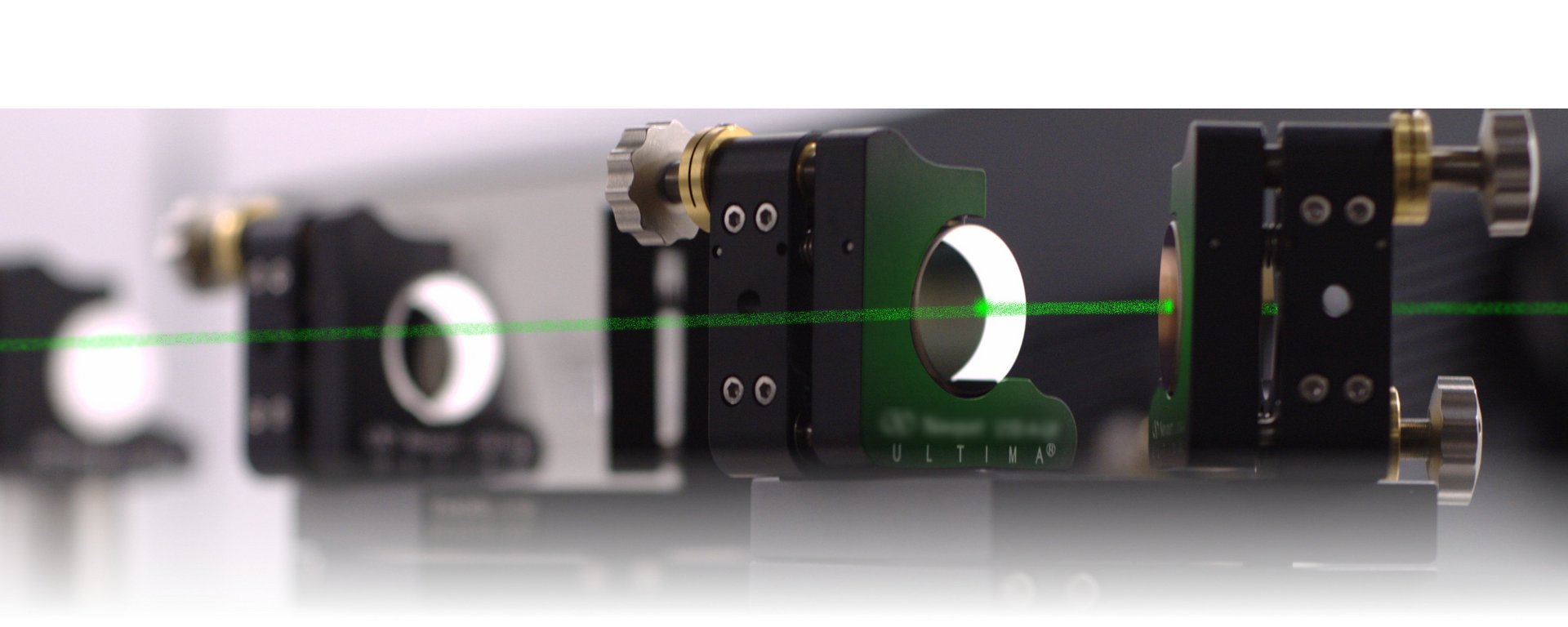THz radiation and diode laser dynamics
The basic components for the generation of THz radiation are nonlinear elements. These are responsible for the mixing processes to generate frequencies in the THz range out of visible and near infrared radiation. However, when using semiconductor diode lasers as such as our sources it is possible to utilize nonlinear effects directly in the electron plasma of the diodes. With this concept the detection as well as the generation of THz frequencies has been shown.
The main prerequisite for these approaches is very fast time constants of the carriers in the diode lasers. This determines the ability of the electrons to follow a modulation in the THz range. To verify these short time constants so called four-wave-mixing (FWM) experiments can be used. By operating a laser on two frequencies simultaneously the difference frequency is generated due to nonlinear effects. This difference frequency mixes then back again with the two original colors leading to side-modes in the optical spectrum (see fig. 1) proving the ability of the electron gas to follow the modulation.

Figure 1: FWM experiments. The sidemodes are generate due to mixing processes inside of the diode laser. A difference of 1nm corresponds approximately to 400GHz.
Using commercially available diode lasers we were able to detect the emission of the difference frequency directly out of the device. Unfortunately only a tiny amount of the power is emitted as most of the THz radiation is absorbed in the highly doped layers of the diode laser. Lots of optimization has to be done here to combine low internal absorption together with a working waveguide for the THz frequencies.
Beside the generation also the detection of THz radiation can be realized with diode lasers. When exposed to sufficient THz power a part of the radiation is absorbed in the electron plasma leading to a heating of the plasma temperature. This heating can be measured rather easily as the voltage drop over the pn-junction of the diode laser is slightly increased.

Experimental setup for the detection of THz radiation with diode lasers.
However there are two main challenges to improve the efficiency of the diode lasers concerning the interaction with THz radiation:
- Standard commercial diode lasers which where used up to now are not optimized for THz radiation. This results in tremendous losses due to free carrier absorption in the highly doped layers of the diodes. Therefore most of the THz power does not contribute to the detection process or is directly absorbed shortly after being generated.
- The conditions for phasematching between the THz and optical components have to be known. This is a crucial point to implement optimization schemes for these devices. Furthermore this requirement restricts the probable application to devices working in a very narrow frequency range.
Reference:
- Semiconductor laser based THz generation and detection, Carsten Brenner, Stefan Hoffmann, Claus-Stefan Friedrich, Tobias Schlauch, A. Klehr, G. Erbert, G. Tränkle, C. Jördens, M. Salhi, M. Koch, Martin R. Hofmann - phys. stat. sol. C6, 564
- Interaction of Semiconductor Laser Dynamics with THz Radiation, Carsten Brenner, Stefan Hoffmann, Martin R. Hofmann - Adv. in Solid State Phys. 47, 179
Colleagues:
